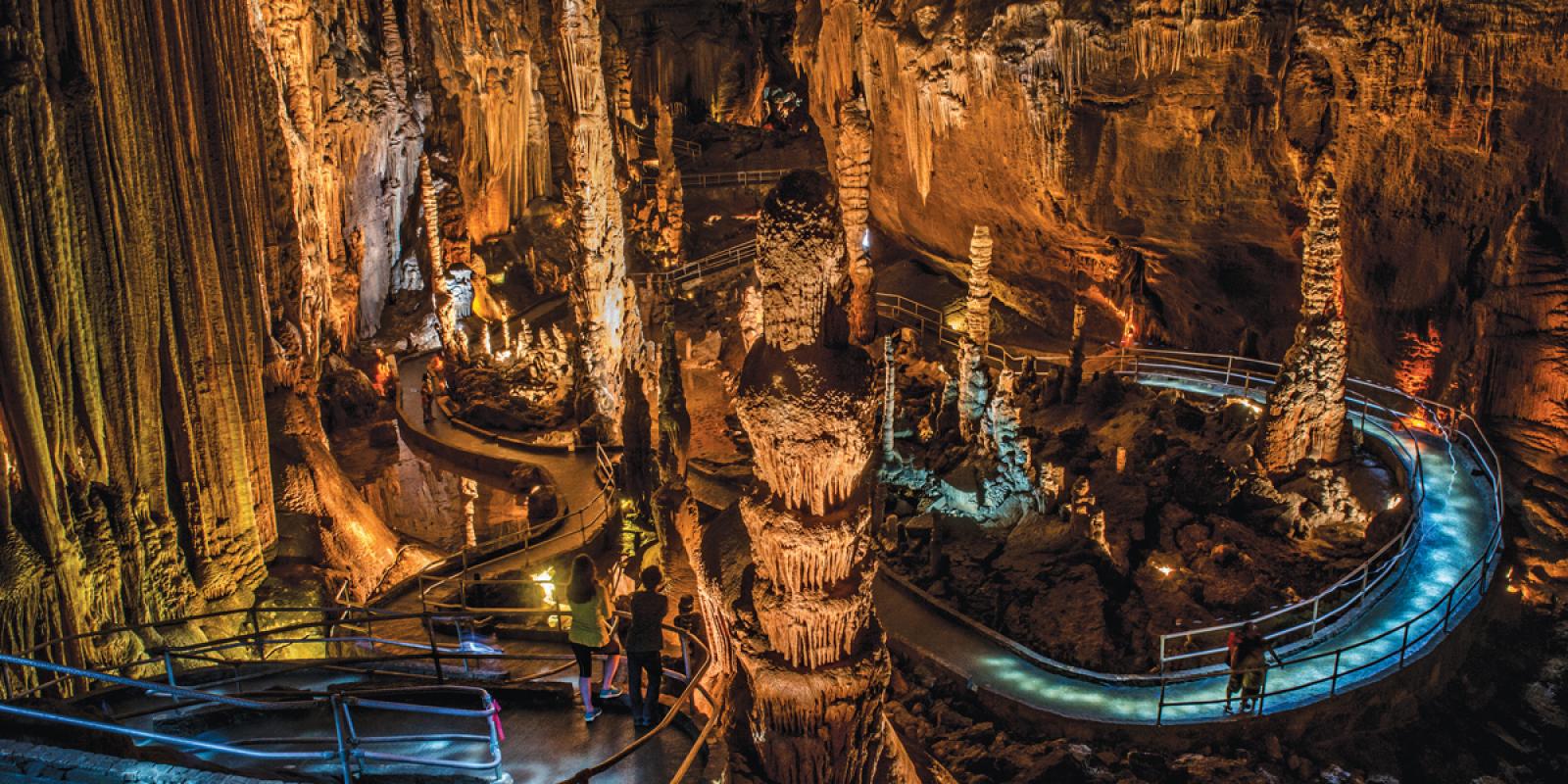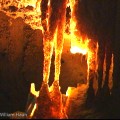
The Dripstone Trail
Dripstone Trail tours are available year-round. The time you should allow for this tour is 1 hour. On this tour you will experience a constant 58 degrees F (so bring a sweater or light jacket) and know that the humidity is close to 100 percent. This trail is accessible to strollers and wheelchairs with strong assistance. This tour covers 4/10 of a mile in an hour. It is an easy walk with two seating areas along the trail for you to rest should you need to. There are only 50 stair steps to be negotiated on the entire tour but for those that can not manage them there are alternate trails that can be used, bypassing some formations.
 In the Dripstone Trail section of the cave bats are rare so don’t worry about running into them. There are tiny cave creatures such as salamanders and crickets for you to see. You will be able to see nearly every type of calcite formation found in limestone caves. This includes delicate, hollow soda straws to massive flowstones and stalagmites. You will be touring the two major rooms in the upper level of the cavern system. The cathedral Room is long enough to hold three football fields and still have space left over. There are many snow-white formations of pure calcite (or calcium carbonate) in the Coral Room.
In the Dripstone Trail section of the cave bats are rare so don’t worry about running into them. There are tiny cave creatures such as salamanders and crickets for you to see. You will be able to see nearly every type of calcite formation found in limestone caves. This includes delicate, hollow soda straws to massive flowstones and stalagmites. You will be touring the two major rooms in the upper level of the cavern system. The cathedral Room is long enough to hold three football fields and still have space left over. There are many snow-white formations of pure calcite (or calcium carbonate) in the Coral Room.
You are walking through an area that was laid down in an ancient sea more than 350 million years ago. On the Dripstone Trail, these beautiful formations have taken years to be made, no one knows for sure how long it has taken but may be thousands, hundreds of thousands or millions of years for the dripping water to deposit the calcite and other minerals into these fabulous formations. Now you know why you are told to not touch anything. By touching any of the stonework you will kill off the ability for the cave to keep creating the beauty you have come to see.
A vast amount of dripstone is found in this portion of the Caverns for two reasons. First, this section is higher than the other, allowing air-chemistry changes which cause the dripstone to form, and second, this portion is older than lower areas, giving the features more time to develop. Click Here for Tour Schedule
